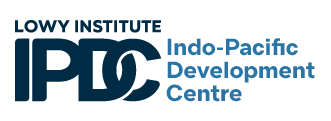The Pacific is the world’s most aid-dependent region, receiving $3 billion in foreign assistance, amounting to $235 per Pacific Islander in 2022. This is roughly five times higher than the per-capita aid received by Sub-Saharan Africa, the region that receives the most total aid globally.
Yet Pacific nations are not just aid recipients; they are also aid donors.
As the Pacific has moved to the centre of geopolitical competition, aid has not only increased but has also become more politically charged. Around 80 donors are currently active in the region, some motivated by humanitarian or Indo-Pacific strategies, while others seek short-term wins such as securing UN votes.
There has been little to no study or monitoring on the support Pacific countries provide to each other. This year’s Lowy Institute Pacific Aid Map changes that.
In this context, intra-regional development financing – aid originating from the region to the region – offers a valuable opportunity for Pacific Island countries (PICs) to assert their independence and promote the “Pacific way” – that is, doing things in a manner that is mutually respectful, inclusive, consultative, consensual, flexible and allows for compromise.
The support that the Pacific Island countries provide to one another cannot realistically match the scale of traditional North-South aid transfers. But it can provide financing that is highly relevant to shared challenges and conditions while expressing regional solidarity.
There has been little to no study or monitoring on the support Pacific countries provide to each other. This year’s Lowy Institute Pacific Aid Map changes that, for the first time mapping intra-regional development financing. From 2008 to 2022, Pacific Island countries have spent an average of $14 million annually on intra-regional aid, or a total of $211 million across the period.
Intra-regional aid transfers in the Pacific take two forms in the data presented in the Pacific Aid Map.
First, Pacific countries contribute to financing Pacific regional organisations focused on development issues, such as the Secretariat of the Pacific Community and other Council of Regional Organisations of the Pacific agencies (excluding the Pacific Islands Forum, which is a political body). From 2008 to 2022, Pacific countries collectively contributed $11 million annually (adjusted for inflation) to those regional agencies.
Fiji leads these contributions. Suva has provided $8 million annually, for a total of $121 million over the last 15 years, largely as the biggest contributor to the University of the South Pacific, which hosts its main campus in Fiji. Similarly, member states of the university contribute to USP’s funding based on a formula that links the financial contribution to the benefits they accrue from hosting a campus.
On a smaller scale, Papua New Guinea leads financial support to the South Pacific Community and the Secretariat of the Pacific Regional Environment Program, while Solomon Islands leads in contributions to the Forum Fisheries Agency.
Second, Pacific countries provide direct support to one another, often in times of need. Analysing those bilateral aid flows reveals interesting regional dynamics.
Bilateral aid between Pacific countries has largely focused on humanitarian support, especially in response to natural disasters such as tropical cyclones. As PNG Prime Minister James Marape said, “It is the true Pacific Way, … to come to the aid of our other brothers and sisters in their times of need”. Most intra-regional aid has consequently taken the form of disaster relief.
PNG, as the region’s largest economy and home to almost 80 per cent of its population, is the leading provider of bilateral aid in the Pacific – that is, official development assistance not going to regional organisations but rather to individual countries – making up about 90 per cent of all intra-regional bilateral transfers. While relief and development assistance are the primary forms of aid directed towards Polynesian and Micronesian nations, Port Moresby’s aid efforts extend beyond disaster relief, particularly with its Melanesian neighbors, Fiji and Solomon Islands. This engagement spans over a range of areas, including election preparedness and other support initiatives, with notable contributions towards the 2023 Pacific Games preparations.
Surprisingly, micro-states such as Tuvalu and the Federated States of Micronesia also contribute support to regional neighbours. In 2016, Tuvalu donated $168,000 to Fiji’s flood relief after Cyclone Winston. While modest in absolute terms, when this aid is measured against gross national income, Tuvalu’s contribution equals 0.66 per cent. In comparison, Australia’s current ratio stands at 0.19 per cent – against a UN target of 0.7 per cent.
Fiji is the top recipient of intra-regional relief aid, grappling with repeated disasters such as Cyclone Tomas (2010), devastating floods (2012), and Cyclone Winston (2016), which inflicted damage equal to 20 per cent of its GDP. Paradoxically, Vanuatu, despite being the most disaster-prone nation in the Pacific, has received the least relief assistance from its neighbours.
This growing spirit of regional solidarity suggests a potential case for establishing a Pacific-led emergency fund to aid countries in the aftermath of disasters. Nauru’s recent $1 million commitment to the Pacific Resilience Facility for disaster preparedness signals that Pacific nations are prioritising financial readiness for crises – applying this same approach to post-disaster funding could be a natural next step.
This idea isn’t entirely new. In Southeast Asia, the ASEAN Coordinating Centre for Humanitarian Assistance on disaster management allocates funds from ASEAN member contributions, ad-hoc donations, and international donors to help the region with relief efforts. A similar mechanism, led by Pacific nations, could empower the region to better support itself when disaster strikes.
Intra-regional financing in the Pacific might remain small in comparison to international support for the region. But its potency as an assertion of independence and solidarity should not be underestimated.


